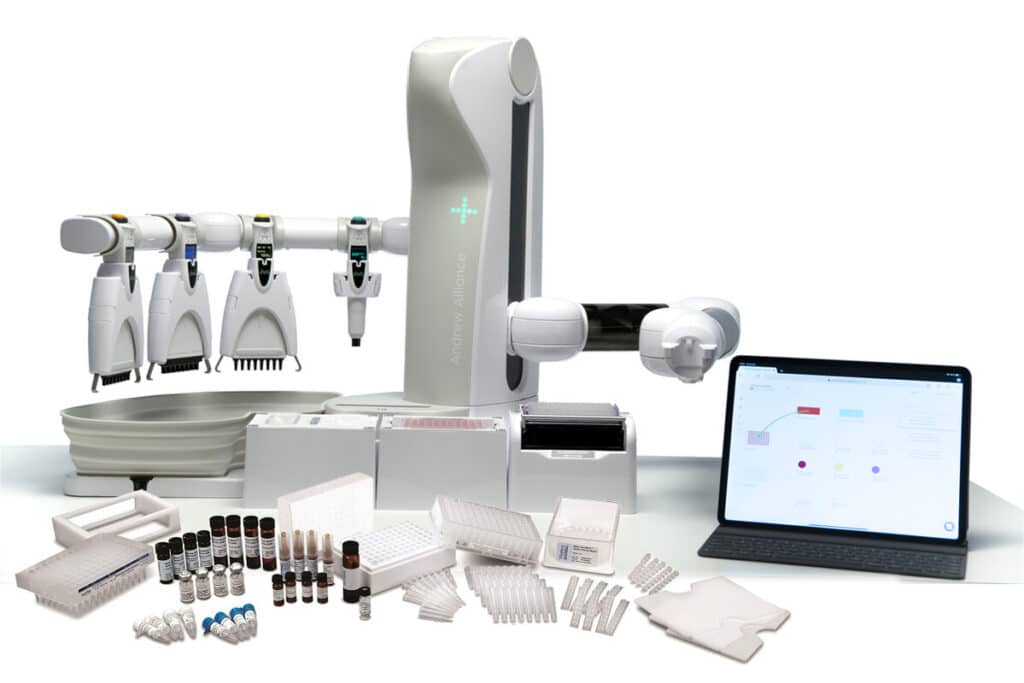Read Time: 5 min
The use of pipettes in a laboratory – a quick brief:
- Pipettes are essential tools that are used within a laboratory environment primarily used for the transfer and measurement of liquids.
- Their uses cover a wide range of practices including sample preparation, serology, cell culture and chemistry.
What is automated pipetting?
Automated pipetting is the process in which the manual aspect of liquid transfer is removed and replaced with an automated mechanical system. The automation removes the likelihood of errors and streamlines the whole liquid handling process.
Why is it important to be precise with pipetting?
The importance of precision and accuracy within a laboratory and research environment is crucial. Countless experiments ranging from developmental work, genetic research and drug testing all rely on error free results.
Liquid handling within the lab is a fundamental technique used within the majority of laboratory projects. This technique demands the precise volumes of liquid to be moved from one container to another, any errors within this process can lead to significant issues with the overall results.
What are the factors that influence the precision and accuracy of pipetting?
- Regular maintenance of laboratory equipment is essential to ensure the correct volumes of liquid are dispensed.
- Maintaining the correct temperature within the laboratory is key as it can affect liquid levels.
- Issues can arise with manual pipetting as its susceptible to human errors.
- The technical aspect of pipetting including pipetting speed, position and mixing can also introduce error if not correct.
What are the challenges in manual pipetting?
There are challenges that can arise when it comes to manual pipetting, the obvious one is human error, inconsistencies such as pipetting movement, liquid measurement and fatigue from hand strain are the most common.
Another manual pipetting issue is consistency, especially when dealing with a large amount of samples and multiple operators. These external factors can lead to discrepancies between users, undermining the reliability of the data.
Why move to automated pipetting?
Moving to an automated system will not only improve your liquid handling procedures but also the reputation your organization holds when it comes to trust in your laboratories.
By using pipetting robots, the challenges faced by manual pipetting are removed and in place you have a fully automated system that can be managed online, even from a remote location.
The Andrew+ Robot and OneLab software directly address the difficulties of many labs within this context and beyond. By implementing the Andrew+ robot and cloud-based OneLab software, scientists are able to run protocols while saving time to focus on other tasks increasing productivity and efficiency.
Automation enhances precision, accuracy, and reproducibility of complex sample preparation methods, but the key to successful optimized automation is the OneLab cloud software. The intuitive nature of the OneLab software minimizes the learning curve needed in order to implement automation quickly. The user friendly drag and dop interface means your lab personnel do not need to be trained in complex programming methods in order to design and implement a protocol.
Find out more about Waters
How will the Andrew+ Robot and OneLab improve efficiency?
The pipetting solutions offered by the Andrew+ robot are numerous, not only when it comes to pipetting. They extend to your personnel within your labs too, automating remotely has the ability of increasing work capacity even when at full operational levels.
What are the unique benefits to remote-capable automation?
- Andrew+ replaces the menial and tedious tasks, enabling more walk-away time.
- Automating greatly contributes to better ergonomics by reducing manual strain.
- Improve and increase throughput while being straightforward to configure.
How are Waters pipetting robots transforming laboratories across multiple disciplines?
- Andrew+ is compact: The liquid handling robot is designed to fit the majority of laboratory benches and biosafety cabinets (BSC). Andrew+, even with 2 full rows of Dominos (allowing to use 7 microplates or 56 falcon tubes or 168 microtubes) it occupies a depth of ~55cm/22”, that fits even the smallest hoods.
- Wide pipetting volume range: Andrew+ pipetting robot uses single and multichannel electronic pipettes (0.2μl to 10ml), ensuring the best liquid handling performance and maximum flexibility.
- Genomics and Proteomics: Accurate liquid handling is essential for DNA/RNA extraction, PCR setup, and protein assays. Automation enhances reproducibility and reduces the risk of contamination.
- Precision and reliability are the key elements within laboratory research. By moving to an automated pipetting system, you will be advancing your organization into the cutting-edge world of specialist research.
Waters is empowering scientists to achieve greater accuracy, reproducibility, and efficiency in their work.
To find out more about data integrity and compliance with your laboratory, please visit Waters.com


